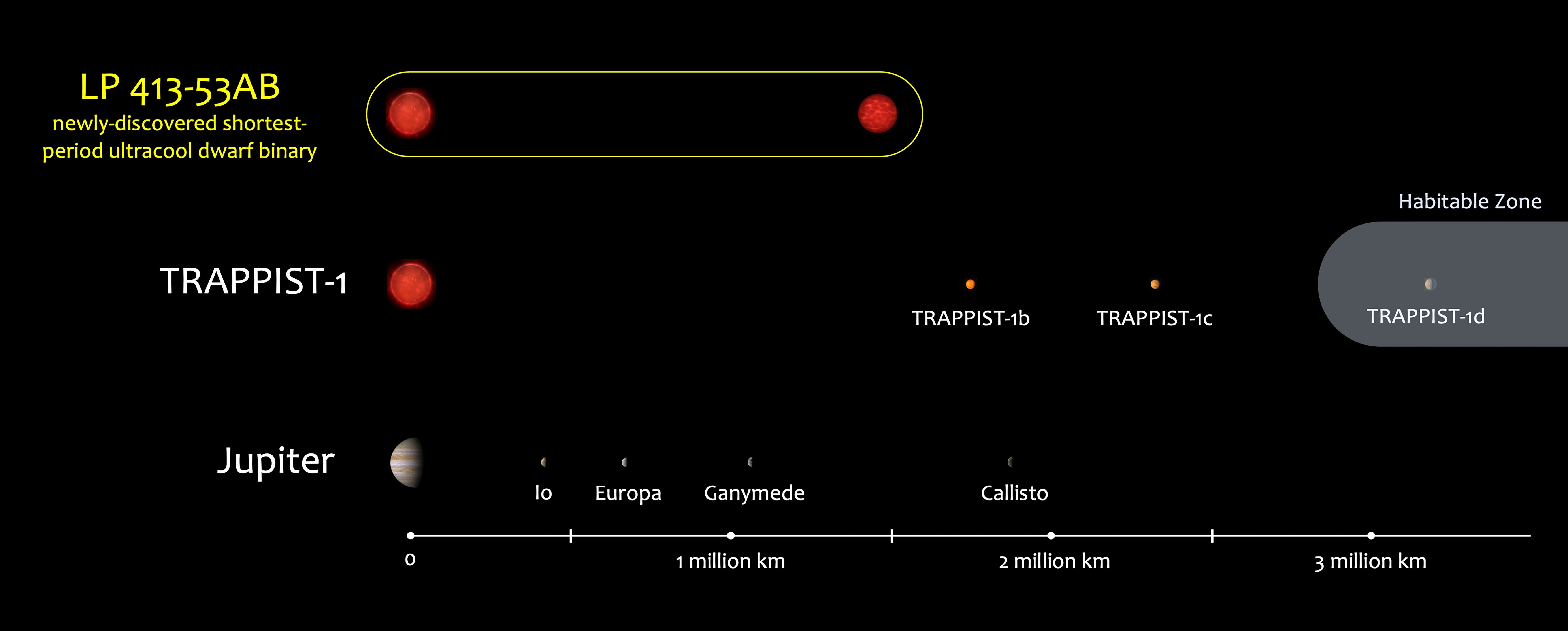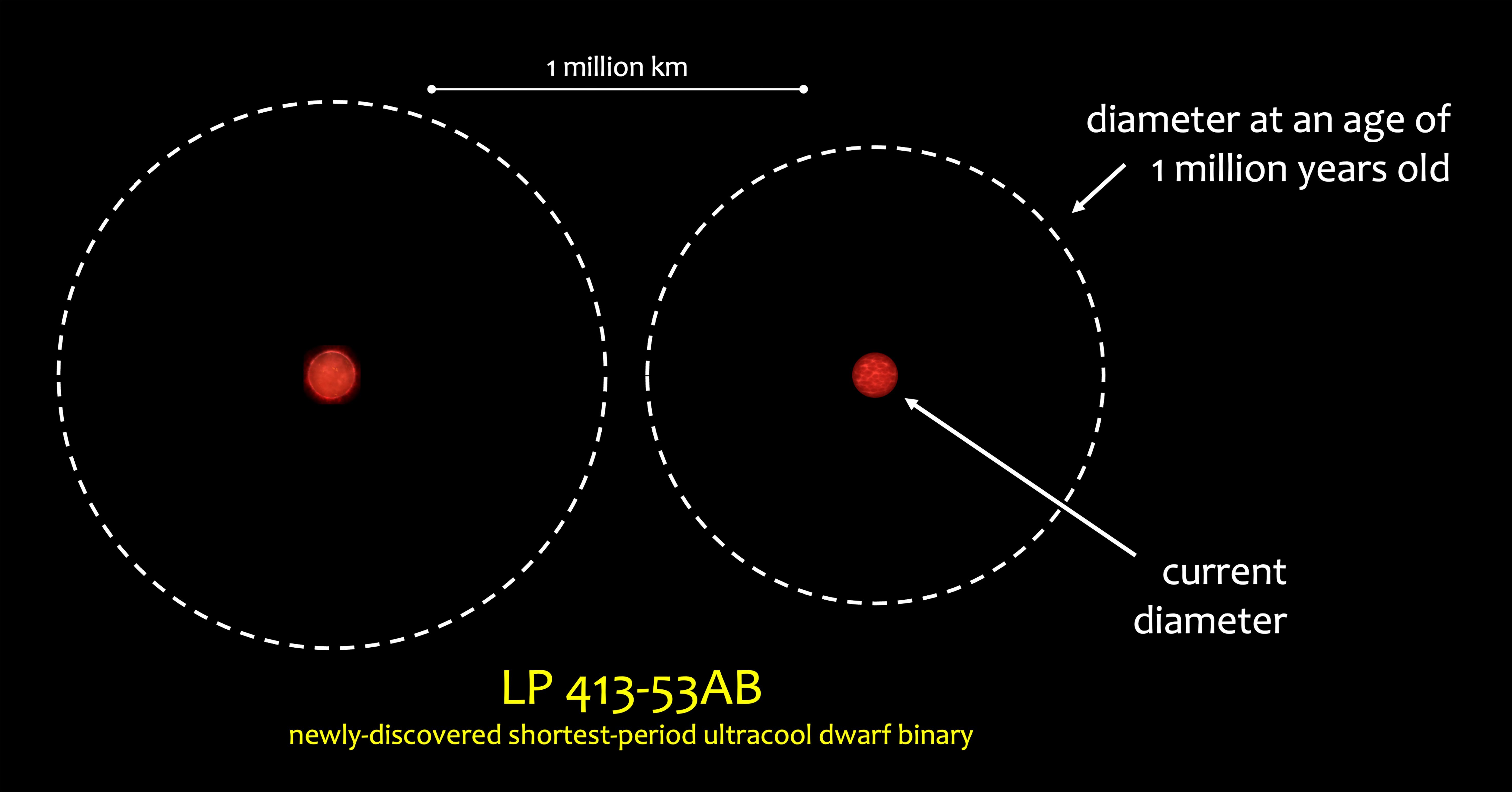Astronomers are reporting the discovery of a record-breaking pair of ultracool brown dwarfs. Brown dwarfs are small stellar objects that were never massive enough to become fully-fledged stars and, among them, the ultracool ones are failed stars that have a temperature just over the boiling point of water. The LP 413-53AB pair is record-breaking in two respects. They are the oldest pair known, and they orbit each other in 20.5 hours.
It is important to discuss a few things about these stellar objects to appreciate how different this pair is. Before LP 413-53AB, there were three other known pairs of ultracool dwarfs. All three of them were very young. At most, they were 40 million years old. That’s infancy in cosmic terms. This newly discovered pair is billions of years old. And the stars have an orbital period that is at least three times shorter than that of all of the other ultracool dwarf binaries.
“It’s exciting to discover such an extreme system,” Chih-Chun “Dino” Hsu, the Northwestern astrophysicist who led the study, said in a statement. “In principle, we knew these systems should exist, but no such systems had been identified yet.”

The two brown dwarfs are less than one percent the distant between the Earth and the Sun apart. Image credit: Adam Burgasser/University of California San Diego
The discovery of the existence of the system came from archival data based on an algorithm developed by Hsu. Then, the pair was followed up with observations using the W.M. Keck Observatory. And it was thanks to those observations that the team appreciated just how quickly these two brown dwarfs were orbiting around each other.
“When we were making this measurement, we could see things changing over a couple of minutes of observation,” added co-author Professor Adam Burgasser, from UC San Diego. “Most binaries we follow have orbit periods of years. So, you get a measurement every few months. Then, after a while, you can piece together the puzzle. With this system, we could see the spectral lines moving apart in real time. It’s amazing to see something happen in the universe on a human time scale.”

Size and distance comparison of the two brown dwarfs. Image credit: Adam Burgasser/University of California San Diego
Brown dwarfs cool and shrink as they age, so turning the clock backwards means that the stars were literally on top of each other if they stayed in their current position. The team believes that these two stars either migrated inwards as they evolved, or maybe they got a kick out of ejecting a third star.
There is a lot of interest in these peculiar systems and the researchers hope to find a lot more out there.
“These systems are rare,” said Chris Theissen, study co-author and a Chancellor’s Postdoctoral Fellow at UC San Diego. “But we don’t know whether they are rare because they rarely exist or because we just don’t find them. That’s an open-ended question. Now we have one data point that we can start building on. This data had been sitting in the archive for a long time. Dino’s tool will enable us to look for more binaries like this.”
Hsu will present this research during a press briefing at the 241st Meeting of the American Astronomical Society in Seattle.
Source Link: Two Ultracool Failed Stars Spin Around Each Other In Record-Breaking Time